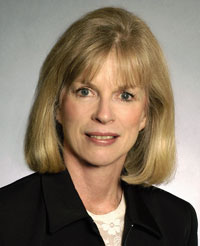Class of 1979
I was fortunate in landing a job junioring to Justice Robert Blair, then head of the litigation department at Morris/Bright/Rose. I remember one of the first problems I was given by the corporate "department" - it required strategic use of the rules: I came up with a solution which was inexpensive, and which worked, much to the surprise of the corporate lawyers, and felt that I had successfully landed.When I graduated in 1979, a little more than a quarter of the class was female. I was following in the footsteps of my brother John, who graduated from U of T Law School in 1972 or so. I articled with Cameron Brewin and Scott, a small labour firm, with (at the time) no women partners or associates. I was one of three students, the other two being Ross Wells (now heading litigation at Gowlings in Kitchener) and Bob Hawkins (now President of the University of Saskatchewan). We were given a huge amount of responsibility; I remember doing a four-day custody hearing, assisting on a criminal appeal, and preparing facta for the court of appeal in labour cases.
There were very few women in the firm when I joined in 1981. I remember in particular Christine Hart, who left law for politics, ending up a minister in David Peterson's government. She is now a mediator. Christine was a role model in many ways, not least in the marketing area; she developed a lecture series with which she travelled around the country, presenting to our existing and potential transportation clients. Morris/Bright/Rose, subsequently Morris/Rose/Ledgett, wasn't called the "trucking law" firm without reason.
I became a partner in 1985, and became the first woman partner at the firm to have a baby in 1986. There was no maternity leave policy in place, and I was worried enough about my new status to take only two months off. It thereafter almost became a tradition that any woman who made partner became pregnant within the first year or two. I am proud to say that the firm developed a forward-looking policy, and all but one of the female partners remained in private practice with the firm after having a family.
Court appearances are, not surprisingly, my most vivid recollections: from arguing a complicated practice motion before a master, to appearing before the Supreme Court of Canada on a leave to appeal application (before these were done in writing). My first big trial before a woman was in the early 90s: we had to go to New York to take the evidence of a witness out of the jurisdiction during the trial, and I remember walking down 5th Avenue with the Justice, listening to her anecdotes of childhood holidays in the Big Apple.
Since then, female judges are much more common; I have had the pleasure of appearing before a goodly number of women judges both in the superior court and the court of appeal. I think that it is a difficult and lonely job. Any woman justice I have been before has been remarkable to me, for her courtesy, her hard work, and her willingness to listen to counsel.
The most traumatic episodes of my career as a lawyer have revolved not around court cases, but around partnership issues within the firm. These climaxed with the failure of Morris/Rose/Ledgett in 2000. I moved, with my colleagues in the condominium law practice group, to Miller Thomson LLP, where I continue to practice, thankfully out of the political aspects of firm practice, and fortunately litigating in the very interesting, and exponentially growing area of condominium law.


